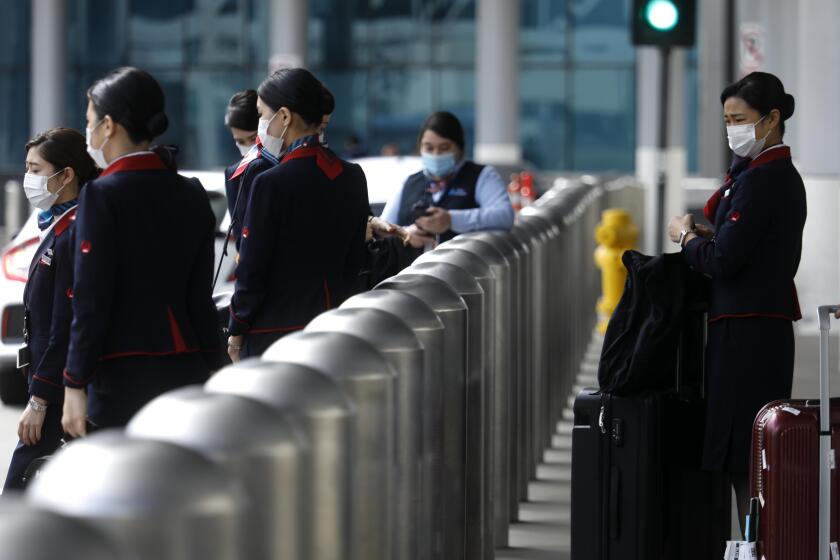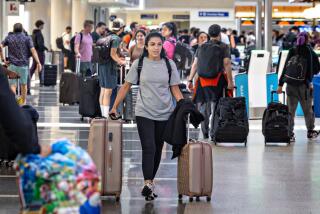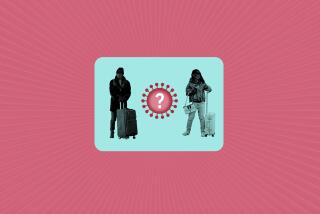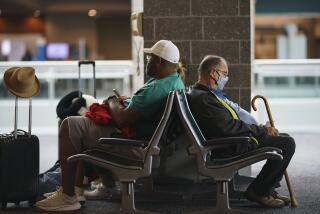You can still travel in the U.S. right now. But should you?
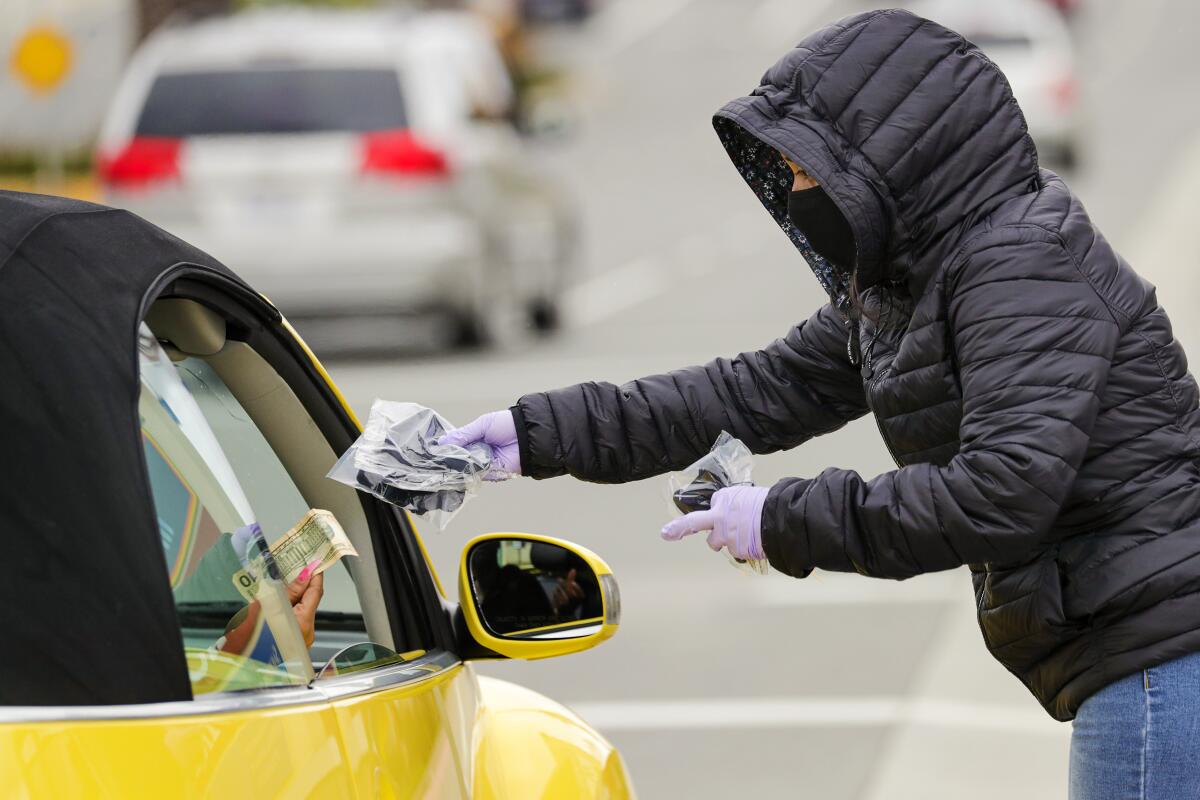
- Share via
Should you travel around the U.S. during the COVID-19 pandemic? The short answer: It’s up to you. Of course, the real answer is more complicated.
The Centers for Disease Control and Prevention usually doesn’t give travel advice and restrictions, but the agency’s website devotes an entire page of questions and factors to consider before you go anywhere. The California Department of Public Health follows those same guidelines.
Flight attendants want nonessential flights to stop amid coronavirus outbreak
First and foremost, you need to weigh whether you are putting yourself or others at risk. Are you sick or do you have underlying health conditions? You probably shouldn’t be traveling and increasing your risk of getting the disease. Then ask yourself: Is your travel urgent?
Every U.S. state has confirmed cases of COVID-19. Currently 97% of the U.S. population is under stay-at-home orders and social distancing guidelines.
“This whole [novel coronavirus] problem is evolving. Look where we were two months ago,” said Dr. Robert Winters, an infectious disease specialist in Santa Monica.
It may be tempting to book precious time off even with the world as unsettled as it is. But this year, your trip may be more financially protected.
Bottom line: We don’t know what we don’t know about the novel coronavirus.
Some studies have shown that as many as 25% of people who have COVID-19 are asymptomatic. “I think it’s a hard lesson to learn that you were capable of transmitting this rather ugly virus to somebody you care about,” Winters said. “Unnecessary travel is a mistake.”
And the stakes are high, even for those who think they are taking proper precautions.
“We talk about [how] the curve may be flattening, but there is a major concern that if we start lessening social controls, you’re going to have a spike back up.”
If you must see someone such as an elderly parent “wear a mask and gloves,” he said.
Winters worries, he said, about flying as well because you could be sitting next to someone who is asymptomatic but capable of transmitting the virus. A decision to travel, he said, “comes down to a lot of personal and social responsibility.”
“I think the CDC site is a wonderful site to refer people to,” he said. “I think it’s very, very solid.”
Last week, California extended its stay-at-home order until May 15. The order asks residents to go out only for food, medicine and other essential activities. L.A. Mayor Eric Garcetti in his daily updates repeatedly asks Angelenos to stay in their own neighborhoods when they go out to avoid spreading the virus.
Neighboring states — Arizona, Nevada, Oregon and Washington — have similar stay-at-home orders. Nevada, where casinos and hotels have been closed since mid-March, asks travelers and returning residents to self-quarantine for 14 days. Arizona asks the same of travelers from hard-hit areas such as New York, New Jersey and Connecticut.
More than 100 flight attendants on one airline have tested positive for the coronavirus. Have airlines done enough?
Food takeout or delivery services are available in these states, though in-dining restaurants are closed.
Seven states have not issued stay-at-home orders: Iowa, Nebraska, North Dakota, South Dakota, Utah, Wyoming and Arkansas. But that doesn’t mean you can go there to party. Those states have instructed residents to follow social distancing and public health guidelines, such as washing your hands frequently and avoiding touching your face.
And some states, Texas, Delaware, Florida and Rhode Island, are “stopping drivers with out-of-state license plates and ordering them to quarantine for two weeks, if they intend to stay in the state,” the Associated Press reports.
States can’t prohibit residents of another state from entering, but they can require quarantines or statements of purpose, the story also said.
Back to those CDC online guidelines. Here are a few of the considerations the country’s top health agency wants you to think about before you take a trip:
- Is the virus spreading in the area where you’re going?
“If COVID-19 is spreading at your destination, but not where you live, you may be more likely to get infected if you travel there than if you stay home. If you have questions about your destination, you should check your destination’s local health department website for more information.”
- Do you live with someone who is older or has a serious, chronic medical condition?
“If you get sick ... upon your return from travel, your household contacts may be at risk of infection. Household contacts who are older adults or persons of any age with severe chronic medical conditions are at higher risk for severe illness from COVID-19.”
- Could you be spreading the virus when you return?
You may be exposing others to the virus from your travels, even if you don’t think you’re sick. “If your symptoms are mild or you don’t have a fever, you may not realize you are infectious,” the CDC writes.
Check out all the CDC travel guidelines.
Catharine Hamm contributed to this report.
More to Read
Sign up for The Wild
We’ll help you find the best places to hike, bike and run, as well as the perfect silent spots for meditation and yoga.
You may occasionally receive promotional content from the Los Angeles Times.
